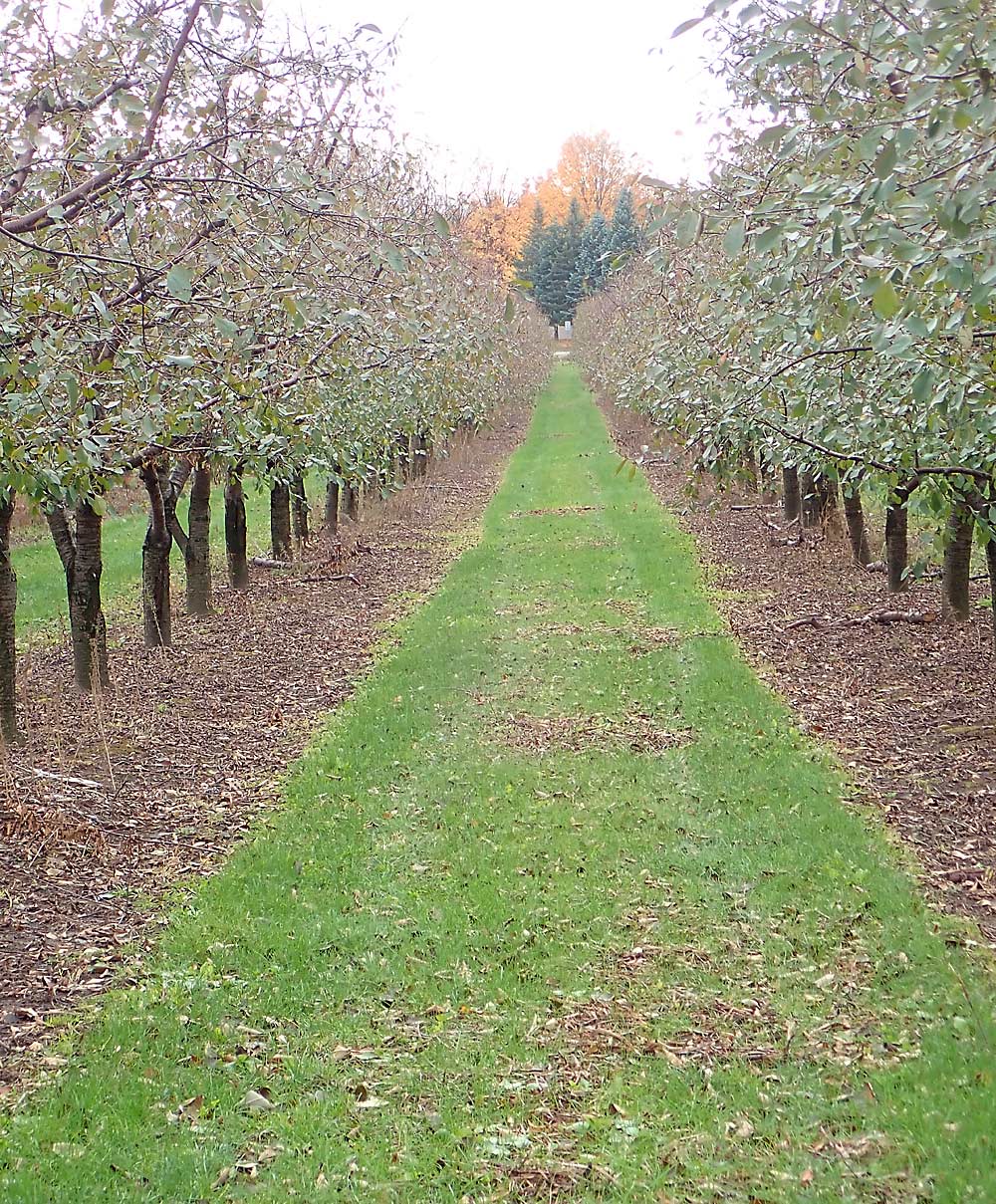
Cover crops may not be on the top of an orchard grower’s to-do list, but they shouldn’t be completely off the list either. That’s because they can help on so many levels: fighting erosion and compaction; improving soil structure; boosting organic material and beneficial soil organisms, thereby reducing fertilizer needs; warming the soil in cooler months and cooling it in warmer months; and helping to moderate soil moisture levels in the face of drought or deluge, according to Christina Curell, cover crop and soil health educator in the Michigan State University Agriculture and Agribusiness Institute.
Curell works with growers at all stages, whether they have established orchards, are replanting or are just starting out, and she offered the following 10 tips to help any orchard grower get the most from cover crops:
1. Get your pH right first. A properly balanced soil pH is necessary for the trees to thrive, herbicides to be activated, soil microorganisms to live, and also for cover crops to grow. “So, get that right first, and then we’ll worry about everything else,” she said.
2. Keep it simple. Although growers may hear about cover crop mixes with a dozen or more species in the mix, Curell advocates for a simpler combination of one or two grasses, such as cereal rye, short fescue, Timothy or orchard grass, with one or two legumes, such as white, red or crimson clover. For growers who want to skip the added nutrition that legumes provide, a cover crop of only grasses will suffice.
Cover-crop advocates will sometimes recommend three different types of plants in a cover crop: grasses, legumes and brassicas. “I shy away from the brassicas for tree fruits, only because most of them are annual and have to be replanted year after year,” Curell said. Brassicas may have a place as a trap crop, though (see tip 9).
3. Match the cover crop to your needs. “If you just want cover plants to cover the soil, then we can just use a very basic grass. If you want to use them for fertility, we can put in a grass and a legume,” Curell said. “There are probably only about 10 cover crops I would recommend, but how you use them would depend on what you want that cover to do.”
4. Manage, manage, manage. “Unless you put in something like a low-growing fescue or white clover, you are going to need to mow your cover crop and keep them managed,” Curell said. Overgrown cover crops attract pests such as voles that could then nibble tree bark. Management, on the other hand, promotes more robust and deeper roots to better withstand winters, improves reseeding for an ultimately thicker cover and results in an overall nicer-looking and better-performing orchard.

5. Add cover crops before replanting. “If you can actually pull that block out of production and wait a year before replanting, you could put in something like a sorghum-sudangrass that grows very tall but produces a tremendous amount of biomass that really helps soils, and especially those sandy soils that we have in Michigan. It just makes the organic matter better, which makes the trees happy,” she said. Sorghum-sudangrass hybrids only grow in the summer, so adding a perennial cover crop, such as rye grass, will carry the plot through the winter, she said.
6. Add cover crops to new orchards first. When working with a new farmer, Curell recommends planting a cover crop before putting in trees. Once the cover crop begins to come in, use either tillage or herbicides to clear strips before planting trees. “I like that method in a new orchard, because once you plant your trees, you don’t have to go back in there with equipment and possibly damage them,” Curell said.
7. Prepare for wild weather. “Our cover crops help mitigate the extremes of climate change,” she said, noting a recent bout of flooding rains immediately followed by freezing temperatures at the beginning of March in west-central Michigan. “Those places that have cover crops should be able to hold that water and sustain such extreme situations, but if you have bare soil, it’s going to be gone,” she said. “Cover crops make our soils more resilient, and if our soils are more resilient, then our plants and trees are going to be more resilient.”
8. Consider water use. Cover crops will help hold water in the soil and provide a moderating effect during dry spells or heavy rains. Growers often have concerns that cover crops will compete with trees for water during drought. That can be an issue with newly planted trees, so supplemental irrigation is helpful for the first year, Curell said, but once the trees reach 2 or 3 years old, trees will easily outcompete cover crops for water.
9. Perhaps try a trap cover. Some growers are planting deer-attracting cover crops in areas of marginal to poor land, to keep at least some of the animals out of the orchard. Oilseed radishes or turnips, for instance, provide leaves for the deer to eat in the fall and high-sugar roots or tubers to dig up and eat through the winter. She hasn’t conducted a study to determine how well trap covers work to deter deer, but she said it might be worth a try to protect ripening fruit and tender young trees.
10. Get good advice. She strongly recommends growers contact their regional extension agents to find out which cover crops work best for their area and for their individual needs and operation. She welcomes any Michigan grower to reach out to her directly at: canr.msu.edu/people/christina_curell.
—by Leslie Mertz






Leave A Comment